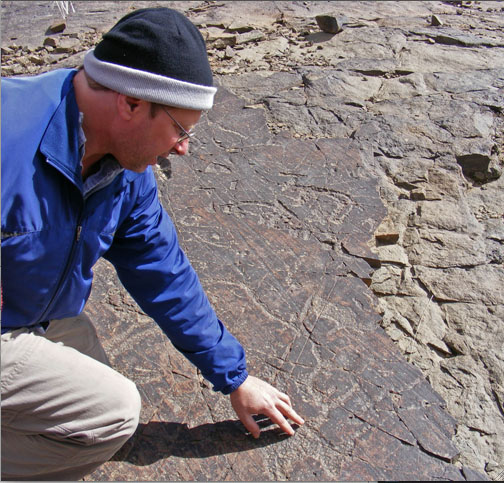Affiliation: University of Toronto

Michael Chazan is Professor with the Department of Anthropology, and Director of the Archaeology Centre at the University of Toronto; he holds his degrees from Yale University (Ph.D. and M.Phil.), the University of Pennsylvania (B.A.). His areas of specialization are paleoarchaeology and human evolution, lithic analysis, the history of archaeology, and the archaeologies of Near East, France, and South Africa. His current research focus is the archaeology of early human sites in the Northern Cape Province of South Africa, particularly the site of Wonderwerk Cave and the sites of the Kathu Complex. Professor Chazan is the author of Archaeology and Prehistory: Pathways Through Time (a widely-used introductory textbook published by Pearson and Pearson Canada) and of Holon: A Lower Paleolithic Site in Israel (co-authored with Liora Kolska Horwitz and published by the Peabody Museum Press).
The town of Kuruman or Ga-Sagonyana is at the edge of the Kalahari in the Northern Cape Province. The archaeology of this region is an extraordinarily rich record of human presence over a period of two million years. The lecturer will present the experience of working in this fascinating part of the world and the results of research at the site of Wonderwerk Cave where he co-directs a project that has documented the earliest known evidence of cave occupation by human ancestors. This talk will give a sense of what it is like to do archaeology in a society experiencing dramatic social change, as South Africa experiences the transformation from apartheid. At the same time the current state of research—what we have learned and what we are still struggling to understand—will be presented for Wonderwerk and also for the neighboring sites of Kathu Pan and Canteen Kopje.
Short bibliography and/or website on lecture topic:
The urge towards creativity and self-expression is a fundamental element of being human. This lecture explores the emergence of creative expression in the archaeological record. The topics covered will include the earliest known symbolic artifacts from sites in southern Africa and the explosion in symbolic artifacts found at the outset of the European Upper Paleolithic. The lecturer’s research at the site of Wonderwerk Cave, South Africa provides an opportunity to consider the deepest roots of the artistic impulse. The wealth of recent archaeological discoveries provides an opportunity to consider human origins from a new perspective, and also raises intriguing questions about the nature of artistic expression.
Short bibliography and/or website on lecture topic:
Chazan, M. 2019. The Reality of Artifacts: An Archaeological Perspective. Routledge.
Chazan, M. and Horwitz, L.K. 2010. Milestones in the development of symbolic behaviour: A case study from Wonderwerk Cave, South Africa. World Archaeology.41(4): 521-539.
White, R. 2003. Prehistoric Art: The Symbolic Journey of Humankind. New York: Abrams.
Chauvet Cave: http://www.culture.gouv.fr/culture/arcnat/chauvet/en/